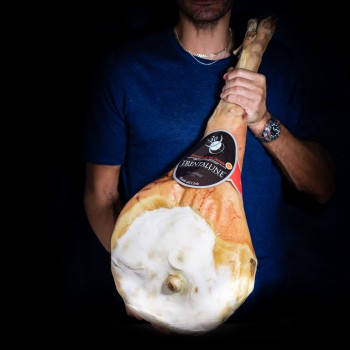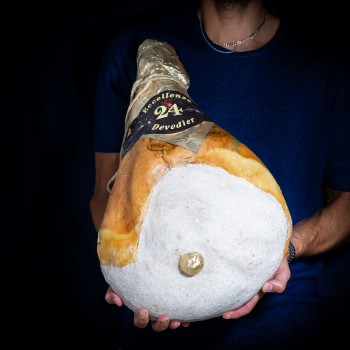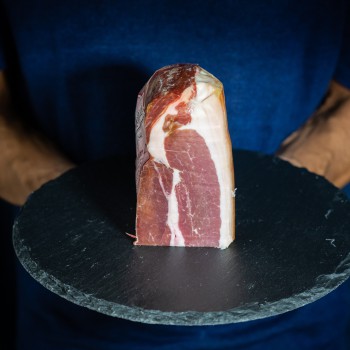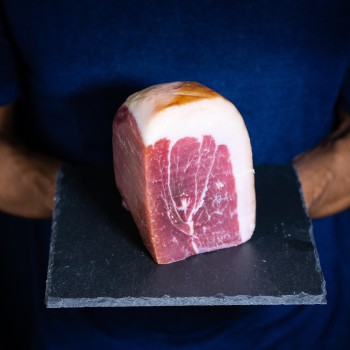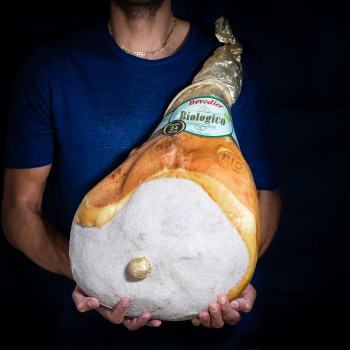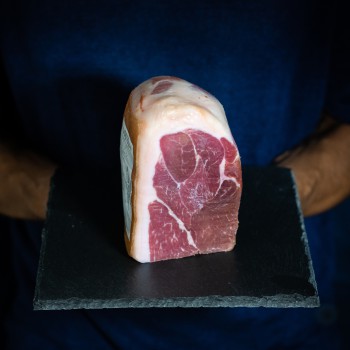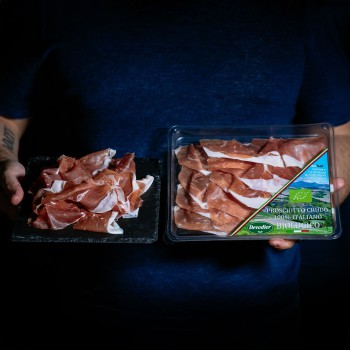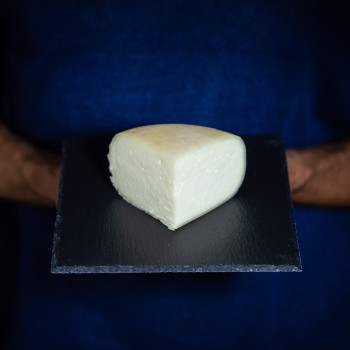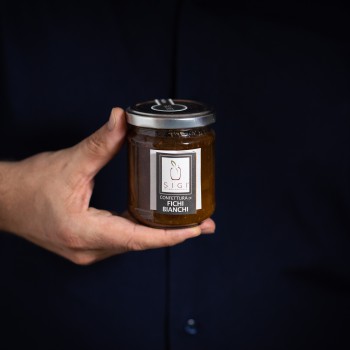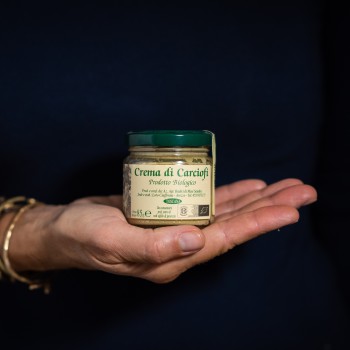- Meat & Seafood add remove
- Cured meats & Cheeses add remove
- Pasta & Pizza add remove
- Preserves & Condiments add remove
-

- Pickles & Preserves add remove
-
- Truffles, legumes & mushrooms add remove
- Desserts & snacks add remove
- Organic
- Tasting Selections
- Christmas
- Regali aziendali
- Brands
- Meat & Seafood add remove
- Cured meats & Cheeses add remove
- Pasta & Pizza add remove
- Preserves & Condiments add remove
-

- Pickles & Preserves add remove
-
- Truffles, legumes & mushrooms add remove
- Desserts & snacks add remove
- Organic
- Tasting Selections
- Christmas
- Regali aziendali
- Brands
Dry-cured ham
Dry-cured ham, the king of cured meats
What comes to mind if I say dry-cured ham? The convenience of a dinner-saver tray in the fridge? Or a whole dry-cured ham hanging in your cellar?
Let’s be clear: these are not mutually exclusive things. We all can have maximum comfort, even with a 7 kg ham, we just need a few extra tools (and some space).
PDO San Daniele ham - whole, bone-in - “Trentalune” selection, aged 18/20 months - 11kg
Whole Parma ham PDO – “Le Eccellenze” brand - aged at least 24 months - approx. 10kg bone-in


The brands we selected
Dry-cured ham is, without a doubt, the most beloved Italian cold cut. Whether it’s sweeter or saltier, more or less seasoned, finely cut or a little thicker, it is an absolutely exceptional product.
Did you know that dry-cured ham dates back to the times of Cato, in the 2nd century a. C.? He tells us in his book, De Agri Cultura.
Did you also know that production techniques remained almost identical? That’s also because, to make an amazing ham you need the same old three things: first choice meat, salt and wind. That is all.
What does organic dry-cured ham mean?
If you’re looking for a superior quality, try organic dry-cured ham. What’s the difference between an organic and a non-organic ham? The pigs’ nutrition and their quality of life.
Only the organic label ensures guarantees that the pigs have been fed with organic food and this obviously affects the quality of the meat.
Animal welfare changes as well. To produce sausages ethically means to respect the animal and to ensure an acceptable living condition, which does not happen in the slightest, say, in intensive farms.
The one we’re talking about is a completely different whole dry-cured ham. Pigs live in the semi-wild and have a genuine diet. There’s a huge difference.
Dry-cured ham: whole or sliced?
Whole VS sliced: Who will win the challenge for the best ham? Both sides have pros and cons, but I’ll tell you this: who goes whole-ham doesn’t come back. Because nothing compares to a freshly cut ham.
Let’s go step by step. Sliced dry-cured ham has basically three main pros: ittakes up very little space in the fridge, it does not require tools of any kind – a slice of bread to go with it at most – and you can buy the exact quantity you need.
The cons: it only lasts a couple of days if purchased at the food counter, a little more if you keep it vacuum-sealed. However, the tastewill never compare to a freshly cut one. Every passing minute the slice deteriorates, losing fragrance and freshness.
Small tips
If you believe a whole dry-cured ham is hard to handle, it’s time to reconsider. There are rules, but they are few and easy to follow. And above all, the taste abundantly repays the effort made.
How to preserve a whole dry-cured ham? Temperature and humidity
If you’re used to buy sliced ham, I bet your very first question is: where would I put a 7 kg ham?
You need a suitable location, with a constant temperature of about 18 degrees and the right humidity. Proper storage is essential, not only for taste but also for health and hygiene safety: if you expose the ham to moisture it may become mouldy, but if you put a dry room it may lose water and become dry.
Another problem: a whole dry-cured ham takes up a lot of space. But if you don’t want to give up the freshness of a freshly cut slice, just cut the whole ham into slices and vacuum pack it, it lasts up to 6 months.
Once the package is open, remember to always keep itin the fridge and cover it with some plastic wrap. It will last for a couple of months.
Cutting tools
The ideal would be a slicer, it’s the only way to have thin and homogeneous slices. We proceed, of course, from the tip to the shank, after removing the excess rind.
However, it must be noted that a slicer takes up a lot of space, it also must be handled with care and be carefully and regularly cleaned. If you’re looking for a simpler alternative, try cutting it by hand.
You’ll need a vice to hold the ham in place, a cutting board and two different knives, one with a short and robust blade for cleaning and removing the rind and one with a long, thin and flexible blade for slices.
The slice must be thin, with an even thickness and with the right proportion of fat. Freshly sliced, it will be a real treat for the palate.
If you have guests you want to impress, if you’re organizing an event and want something spectacular as well as delicious, or if more simply ham is a must in your family, a whole one is exactly what you need.
Because only with a whole dry-cured ham you can enjoy a freshly cut slice of goodness anytime you want!






















